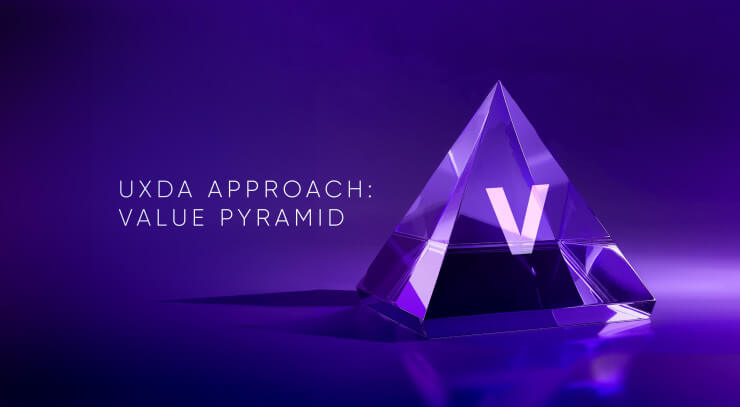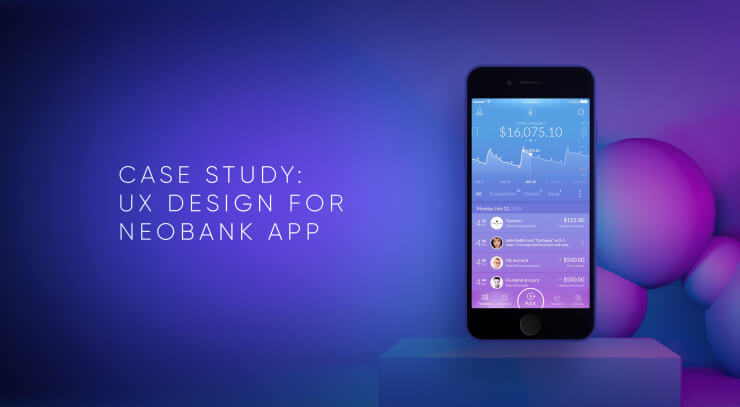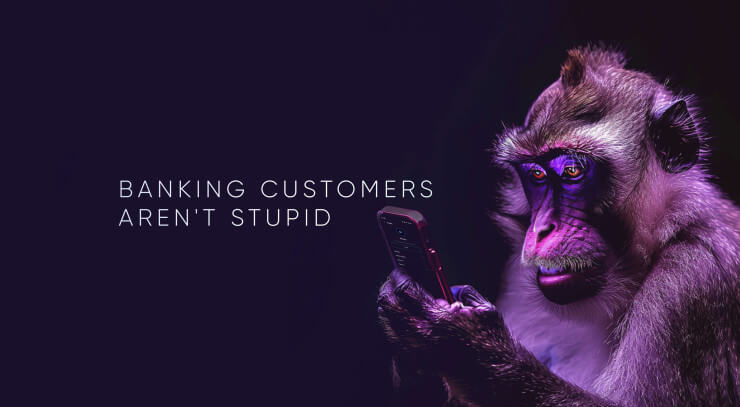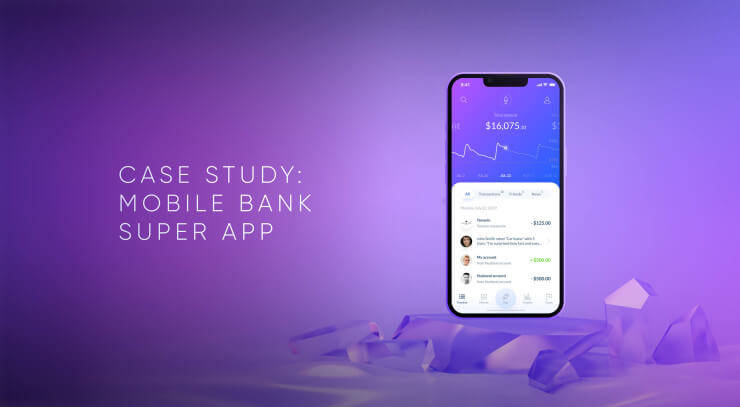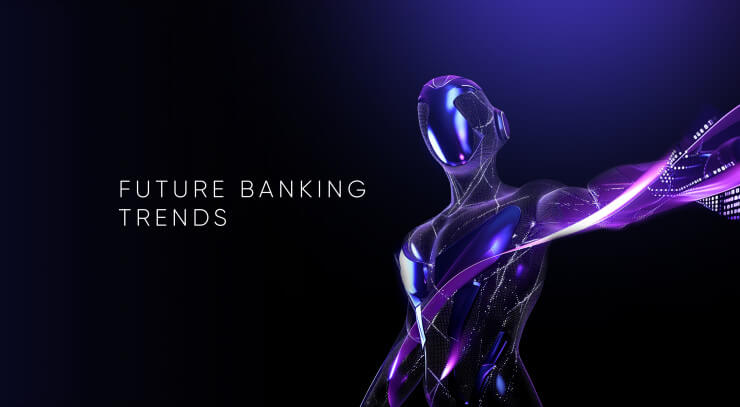You must be ready to break the rules when designing an exceptional user experience for an innovative banking product. I've seen large financial teams take years to create products that fail in the market while small Fintech startups capture audiences of millions within a month. Limitations reduce our creativity and lead to formulaic and uncompetitive results. And the financial industry, in particular, is full of rules. Let’s think out of the box and break a few of these rules instead of churning out boring and useless banking products.
Innovative banking products are financial products or services that are new, different, or cutting-edge. These products can help banks better serve their customers and differentiate themselves from competitors. Innovative banking products make it easier, faster, and more secure for customers to manage their money, make financial transactions, and make financial decisions.
The Grass isn’t Always Greener on the Other Side
Of course, modesty is embellishing, and envy is a bad feeling, but it's quite the opposite in creating innovative banking products. You have to constantly look at the other side and seek better ideas to provide a delightful customer experience. Look at your competitors, some of the best examples in the industry, get inspired by them and go even further.
Do you want to make an excellent banking product? Why not learn from the convenience of Amazon, the coziness of Starbucks, the innovation of Apple, and the beauty of Ferrari?
Somewhere out there is sure to be green grass that will show you the way and motivate you to break through. For example, Venmo was deeply inspired by social networks. It allowed friends to quickly and easily split bills and shared users’ transactions in a friend’s newsfeed, similar to those on social media.
If it ain't Broke, Don't Fix it
This may apply to your TV, but not when it comes to the design of the best customer experience. Here, innovation and improvement are the drivers that fuel growth.
Don't be afraid to disrupt the status quo to improve the world. Finding a better solution to established processes requires creativity and using the first principle. Re-invent your financial product using up-to-date technology and an innovative approach to address the most common user failures and pains. The world as we know it today would not exist if Steve Jobs had not reinvented the cell phone. Now to get information, a service or a product we don't need to look for a computer, we just take our smartphone out of our pocket and press a button.
For example, Klarna has taken good old-fashioned credit and morphed it into a digital product that, unlike credit cards, does not require scoring and does not affect a user's credit score. As a result, embedded BNPL credits, which are easy to use, have revolutionized the market and launched a new megatrend in the financial industry.
Never Mix Business With Pleasure
Many believe the financial industry is ruled by calculation, greed and money, leaving no room for humanity or emotions. It's time to break that stereotype. Look at Fintech; they are gaining millions of customers at the speed of light because they offer care, simplicity and convenience. They want to benefit people, and these are the kind of entrepreneurs who are truly passionate and in love with their business, thereby energizing their team as well. Clients and colleagues feel alike and share this passion.
It's silly to waste our life on stuff that has no meaning or joy. Find out exactly how your product can help people, improve their lives and breathe meaning into it. Add creativity to your product, make it unique and innovative, and it will bring fun back into your work. After all, doing something significant and exciting is always more enjoyable.
Look at Sir Richard Branson; his passion for products and people is legendary. As Branson writes in his book, The Virgin Way: Everything I Know About Leadership,» “Fun is one of the most important - and underrated - ingredients in any successful venture. If you're not having fun, then it's probably time to call it quits and try something else.”
Stay in Your Lane
Minding your own business is not bad advice because no one likes upstarts, especially those who do not quite understand where they are going. But, when it comes to the development of new products, there are always more questions than answers. And those who aren't afraid of seeming like silly upstarts can discover unexpected and interesting solutions.
Go beyond, experiment, try new ways, and look for new opportunities. Get inspired everywhere; the broader your horizons, the better. Elon Musk constantly breaks this rule and explores new horizons. He decided to conquer space even though he had little experience with it, and he succeeded.
For example, Apple added Apple Pay and is now connected to the aforementioned BNPL trend, after realizing that integrating it into the company's product ecosystem would greatly enhance the value proposition for their customers. This is how the largest electronics company in the world became a prominent newcomer in the financial industry.
More is Better
Let’s add more features, and even more features, and just a little bit more. If our competitors have 100 functions in their product, we need 101. We all see the victims in this race - complex and incomprehensible products that frustrate users. Let's move away from quantity and think about quality. What exactly do the users need, what do they use, and why are they with us?
We all know from psychologists that human attention is limited to seven elements. That's why it's important to find the right focus and not over-feature the offer in the product. Products with thoughtful and intuitive interfaces are in high demand. Users don't like the paradox of choice; they just want a solution to a problem.
For example, Robinhood took a trading service, discarded a bunch of complicated trading charts, tools and settings and simplified it, making investments available to millions of ordinary people.
Do unto Others as You Would Have Them Do unto You
It's a simple rule that I always try to follow in life. But, in the case of product design, it plays a cruel trick on us. After all, it's important that the product takes into account what the users know and want, and this often differs dramatically from your skills, especially in a field as complex as finance.
Many people design a product for themselves, to their own taste, because they think that the people around them have the same experience and knowledge, and therefore it will be just as easy for everyone to figure it out. This cognitive bias is called the curse of knowledge. And only by researching and communicating with others can key inconsistencies be identified.
For example, the owners of a financial service once came to us complaining about low demand despite the advertising, beautiful design, and that the product was perfect for them. Research showed that their clients do not understand the service. They have a different mental model. After the redesign, the demand increased sharply.
If You Want Something Done Right, You Have to Do it Yourself
On the one hand, designing a product internally gives you more control. On the other hand, the worst bank products I've seen were designed by internal teams. The problem is that, with blinded eyes, it's very hard for us to detect and capitalize on new opportunities.
Many of the best products around are made by outside designers, architects and engineers. This is because these professionals accumulate a tremendous amount of experience and knowledge, looking for cutting-edge solutions for different brands. Their search is not constrained by the established framework of the company and the accepted rules of work.
For example, we had more than ten clients who tried to create a digital product for their financial service several times before coming to us. They spent a lot of time and money, but each time they were dissatisfied with the result. Using UX design methodology, UXDA employees helped find the right answers and designed a solution that pleased both the users and business owners. But, it required product owners to change their mindset and transform the usual business model.
Conclusion
People are often so used to rules that they are not even aware of their impact. As a result, many products are developed at roughly the same level: average. But if you want to offer your customers something special, something that surpasses the competition, you have to break those internal constraints. We encourage you to break the rules to unleash your creativity!
To create a user experience that empathizes first and foremost with the user's problems and preferences, you need to shelve your company's priorities. Are we trying to design innovative products to facilitate the user experience and provide a simple and understandable solution, or are we focusing on faster and bigger profits?
Focusing on the user will also lead to impressive turnover figures in the long term, but focusing only on profit is likely to be a big disappointment because the 'foundations of the digital house' are incomplete - they lack the cornerstones of human values: empathy, care, and serving.
Additional answers that might be helpful:
What are the main steps to create an innovative banking product or service?
The steps for creating an innovative banking product will vary depending on the specific product and the goals of the bank. However, some common steps are:
1. Identifying a need or opportunity in the market
This could involve conducting market research, gathering customer feedback, or analyzing industry trends to determine what types of products or services customers are looking for.
2. Developing a concept for the product
This could involve brainstorming ideas, creating prototypes or mock-ups, and testing the product with a small group of customers to gather feedback.
3. Creating digital strategy and an execution plan
This step involves developing a strategy and a detailed plan for how the product will be marketed, sold, and supported. It should include financial projections, target customer segments, and positioning for differentiating the product from competitors.
4. Obtaining necessary approvals and licenses
Depending on the nature of the product, the financial company may need to obtain regulatory approvals or licenses before launching the product. This could involve working with regulators, legal teams, and other stakeholders to ensure compliance with relevant laws and regulations.
5. Launching the product
This step involves promoting the product to customers, training staff on how to use it, and providing support and maintenance as needed. It may also involve ongoing efforts to gather customer feedback and improve the product over time.
Learn how design thinking can help you innovate >>
What are the main challenges for banking innovative products and services?
There are several challenges that banks may face when trying to innovate and create new products:
Regulatory challenges
Banking is a heavily regulated industry, and new products may require regulatory approvals or licenses. This can be a time-consuming and costly process, and may limit the types of products that banks can offer.
Customer adoption
Even if a bank creates a great new product, it won't be successful if customers don't use it. Banks must therefore focus on promoting innovation and making it easy for customers to adopt it.
Competition
Other banks may also be trying to create new products, and may be able to offer similar or competing products. Banks must therefore strive to differentiate their products and provide unique value to customers.
Cost
Developing and launching a new product can be expensive, and there is always a risk that the product will not be successful and will not generate sufficient revenue to justify the investment. Banks must therefore carefully consider the costs and potential returns of any new product.
Technological challenges
New products often rely on technology, and banks must ensure that their systems and infrastructure are capable of supporting the product. This can be a significant challenge, as technology is constantly changing and evolving.
Find more about disruptive innovations in banking >>
What are the key trends that will affect banking innovative products and services?
There are several key trends that are likely to affect the development and success of innovative banking products and services:
Humanization Due to a Global Digitization
The growth of digital technology is transforming the way that banks interact with customers and conduct business. Banks must therefore focus on developing digital products and services that are easy to use and provide value to customers. The digital world transformations make the emotional experience, human-centricity and ethical consumerism into social trends. To place people over profit, a business should become purpose-driven, which requires exceptional human-centricity.
Personalization Provided by Artificial Intelligence
Customers increasingly expect banks to provide personalized, convenient, and seamless experiences. Thanks to AI, every user will have the opportunity to make more effective and impactful decisions in their daily lives using appropriate insights extracted by AI from the big data collected in financial services.
Extension by the Metaverse
The development of the metaverse will create a new virtual world in which people can experience innovative interaction, entertainment and work. And, financial transactions will certainly be in demand there as well as in the real world, but from the users’ point of view, it should be free from territorial, temporal or spatial boundaries.
Simplification Powered by Embedded Finance
Embedded finance will change the way customers interact with financial services. As more financial services become integrated into non-financial products and platforms, customers will start to engage with financial institutions through these channels, rather than directly with the bank getting needed financial services on the go in the background. This will extremely simplify the financial experience.
Democratization Driven by Decentralized Finance
DeFi will fundamentally change people's financial experience, as the very perception of value will change. Virtually anything can be turned into an asset and used without intermediaries in a financial exchange with sufficient liquidity. Most likely, decentralized liquidity markets for different types of assets will be created spontaneously every second.
Read more about these future banking trends >>
Get UXDA Research-Based White Paper "How to Win the Hearts of Digital Customers":
 If you want to create next-gen financial products to receive an exceptional competitive advantage in the digital age, contact us! With the power of financial UX design, we can help you turn your business into a beloved financial brand with a strong emotional connection with your clients, resulting in success, demand, and long-term customer loyalty.
If you want to create next-gen financial products to receive an exceptional competitive advantage in the digital age, contact us! With the power of financial UX design, we can help you turn your business into a beloved financial brand with a strong emotional connection with your clients, resulting in success, demand, and long-term customer loyalty.
- E-mail us at info@theuxda.com
- Chat with us in Whatsapp
- Send a direct message to UXDA's CEO Alex Kreger on Linkedin







